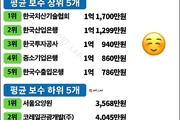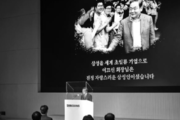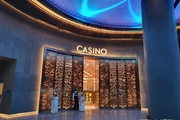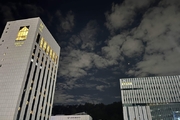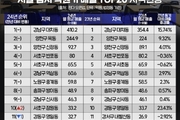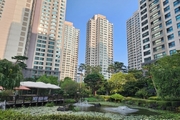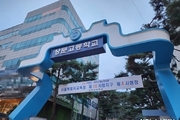![Seoul's Gangnam district [RSQUARE]](http://www.newsspace.kr/data/photos/20241042/art_17291398775915_5eb1b9.jpg)
[NewsSpace=Jack Moon] The small office building market in Seoul's Gangnam district is showing a unique phenomenon that defies common investment sense. RSQUARE's latest data analysis provides a breakdown of the paradox alluding to its historical background and its distinct urban landscape.
According to RSQUARE's R.A (Real Estate Analytics) system, the ‘24.Q2 average cap rate of small office buildings in Seoul stood at 3.2%, significantly lower than that of medium and large buildings at 4.5%. Average sale price, however, was 35 million won per py (pyeong) for small that exceeded the 32 million won/py for medium. The answer to this paradox lies in the 'potential development value' and 'Gangnam's unique urban planning history'.
Gangnam’s development dates back to the 1970s. The government led the initiative of developing Gangnam, formerly bucolic, in the 1980s to ease the overcrowding in Gangbuk. According to R.A's historical data, the early Gangnam was mostly residential (92% residential, 8% commercial), broken down into small lots.
The small land lots had a significant impact on shaping the characteristics of Gangnam's real estate market. R.A's ownership data analysis shows that in the 1980s, up to 85% of the commercial real estate in Gangnam were owned by individuals. Due to small plots, investments were driven by individuals rather than corporations, and many bought for speculative purposes that resulted in shortage of new building constructions.
In response, the government implemented the Excessive Land Profits Tax in 1989 to increase the new building supply. The policy promoted new office building constructions in Gangnam, but construction costs became burdensome due to small plots and dominant individual ownership; this left the new supply focused on small offices rather than medium to large.
In the late 1980s, the government's urban landscape improvement policy made Gangnam's skyline even more complex. The 1984 'Teheran-ro Urban Design Guidelines' set the minimum land area to 600㎡ along Teheran-ro and 1,000㎡ around intersections. This incentivized the individual owners to initiate developments through land consolidation, resulting in large office buildings in areas adjacent to Teheran-ro.
However, a different landscape unfolded on the back streets where these standards did not apply. According to R.A's Geographic Information System (GIS) analysis, the density of small buildings on Gangnam Teheran-ro's back streets was three times higher than on Teheran-ro itself.
This is a phenomenon unique to Gangnam. R.A's urban planning data analysis shows that Yeouido, which was developed around the same time, had larger plots and was mainly supplied with medium to large office buildings. As of 2024, the average gross floor area of offices in Yeouido is 33,000㎡, six times larger than the average of 5,500㎡ for offices on Gangnam Teheran-ro's back streets.
This unique urban structure of Gangnam has become a factor in increasing the potential value of small office buildings. According to R.A's floor area ratio analysis, the average actual floor area ratio of small office buildings in Gangnam-gu is only 70% of the legal floor area ratio. This offers the additional 30% area up for grabs in case of redevelopment.
In fact, 35% of the small office building transactions brokered by RSQUARE in the first half of 2024 were for redevelopment purposes, of which 80% were buildings located on back streets. This is a 13 percentage point increase compared to the same period last year.
Small office buildings also show unique characteristics in investment patterns. According to R.A data, the proportion of individual ownership of small office buildings was 78%, more than twice as high as the 35% for medium and large buildings. In the first half of 2024, 65% of small office building buyers were individual investors, and 80% of them used rental deposits as leverage to lower their equity ratio.
Gangnam's small office building market is a unique ecosystem born from the intersection of Seoul's urban planning history and real estate investment trends. While it offers a low yield on the surface, it also harbors a valuable redevelopment potential.
At times, cold data, composed of 0s and 1s, best explains the urban history and the hot enthusiasm of the real estate market; the small office building market in Gangnam proves to be the case. Behind the tall buildings on the main streets, small buildings on back streets coexist with Gangnam's past and future.
The Gangnam small office building market is not just a real estate investment target. It is a microcosm of Seoul's urban planning history, the evolution of government policies, and the complex intertwining of individual investors' dreams and ambitions. Understanding this unique ecosystem will be the key to reading Seoul's past and predicting its future.









